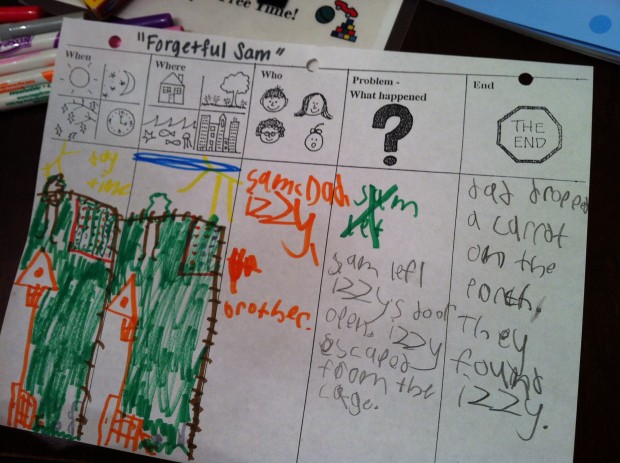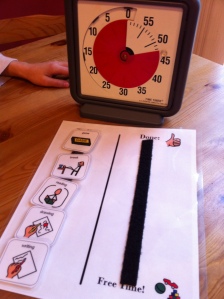I thought this post (copied below) was an interesting reflection from parents in the trenches. Lately, there have been several new studies examining causes and correlations of autism, including the link between air pollution and autism. For a parent of a child with autism, this can be equally promising and exhausting, and doesn’t take away from the day-to-day challenges and wonders of parenting a child with special needs.
Quoted from The Guardian:
Last week, Kristina Chew wrote about how she’s struggled with whether it’s right to support the medical community’s efforts to find a cure for autism. We opened up the issues raised Kristina’s piece to Guardian readers, and asked parents of autistic children to weigh in on what finding a cure means to them. Nearly 200 parents wrote in with their thoughts and we’ve published ten responses below.
Jane Daniel, London: ‘I’ll take the cure, please’
At diagnosis, the paediatrician said, “I’m afraid it’s autism,” and gave me a leaflet from the National Autistic Society. This pretty much set the tone for our experience with physicians: generally woefully ignorant, and not interested in investigating beyond the diagnosis. The lazy Rain Man references are as insulting as they are dull. Why on earth wouldn’t you want to find a cure? There is no hope that my son will ever be able to live independently, and I’m terrified at the prospect of what will happen when I’m no longer around to advocate for him. I’ll take the cure, please.
Miriam Cotton, Ireland: ‘The concept of a cure is offensive’
My doctors accept my son’s condition and don’t speak of it as something that can be cured. The concept of a “cure” for autism is as offensive as wanting to cure Down’s syndrome. There are therapies and supports that can substantially help the person to mitigate the symptoms of their condition – to develop strategies for living with it optimally – but the condition is there for life. Early diagnosis and help improve a person’s capacity for independent living exponentially. It’s the same for ever disability, of course, and yet our governments steadfastly refuse to confront this fact.
Dave Korpi, Oregon, US: ‘I would love a remedy as much as a cure’
I don’t feel like autism is as much of a stigma as it used to be. On the other hand, the US media sends mixed messages about why autism rates are rising; the CDC attributes it to better diagnostics, which is laughable. I would love to have a remedy that would lessen the intensity of the symptoms, as much as a cure. My son is brilliant in some areas, infantile in others, and non-verbal. Trying to develop independent living skills is woefully not enough, but it’s better than no strategy, or warehousing, which is still commonplace.
Gordon Darroch, Scotland: ‘The idea of a cure is meaningless’
The doctor has had very little input into the lives of either of my two autistic children, mainly because they aren’t taking medication. Speech and language therapists, educational psychologists, child psychologists, paediatricians, schoolteachers, music therapists, respite care workers and social workers have got most of the bases covered. I find the idea of a cure meaningless. I want my children to acquire skills that let them get on in life and become happy, sociable, thoughtful, considerate people, but they’ll always be autistic. If I’d been able to prevent them being born with autism I would have done so, but dwelling on that notion is just denying the reality of the situation they’re in. They need practical help and therapeutic support now, not the dubious benefits of a miracle pill at some point in the future.
Leila Couceiro, California, US: ‘I still have hope’
The researcher who works on new medications is not the same person who will think about smarter ways to include and support the adult autistic population. My child is only nine years old, so I still have hope that a new drug to lessen his symptoms will be discovered in his lifetime. And at the same time, not a day goes by without my worrying about his adulthood after I’m no longer alive and able to make sure he’s safe.
Rob Gentles, Ottawa, Canada: ‘I would jump for joy, but I am doubtful’
For my family, we just need help getting Alex as independent as he can be. I fear for Alex once we are gone. I hope that he will be able to advocate for his own needs. I hope that there will be good people who will help him look after himself. We will do what we can to save money for him now, but we are not rich and we can’t predict the future. I would jump for joy if there were a cure, but I doubt there will be one. Whatever the cause of autism, it has probably been with us for a long time.
Tara Hughes, United Kingdom: ‘There is nothing “wrong” with me’
I’m autistic. I frequently despair at the coverage of autism in the media. I do not “suffer” with autism. I don’t need or want fixing or a cure. Equating autism with cancer is extremely offensive. I don’t need curing. I’m autistic; I have a different operating system that’s all. I’m not “less than” the majority who run on a different distribution. Some things I can do really well, and some things are harder and I might sometimes need help. Reasonable adjustments, anyone? Autism is not an illness. It’s a way of being. It’s the way I am. There’s nothing “wrong” with me.
Sherry Nelson, New Jersey, US: ‘A cure would mean everything to us’
My son is ten. When he was little, it was all about ABA therapy. The hope that he could learn to communicate and function normally was alive and well for a while. A cure would mean everything to our family. Our son is so sweet, happy and loving. But he can’t tell us his most basic needs. He can’t tell us he is hungry, or thirsty or sick. You can get through the day and make sure he eats and drinks enough, but when he is sick, it is so hard. You are guessing half of the time, trying to help him get better. That is when being his mom just breaks my heart.
Yakoub Islam, Greece: ‘We need to maintain the funding’
My son starting taking small doses of Risperidone at age 16 (he’s now 20), to help manage his challenging behaviours, which had become more destructive during his adolescence. The medication was effective, as part of an overall programme of behaviour management. We would never have managed him living at home until he was 19 if I had not trained as a special needs (autism) teacher, shortly after he was diagnosed at three. My concern is that my son’s specialist autism care placement continues to be fully funded. It sickens me that so-called austerity measures are targeting some of our nation’s most vulnerable people.
Michelle, Canada: ‘Support is what we need’
My boys don’t need a cure – they are not diseased. They were born with autism: intervention was needed as early as the first three months of their lives. To “cure” my kids, I’d be wishing my sons would be different kids than they are today. Support is what we need, not the insulting idea that our kids are suffering from a disease.

 After all, a child who self-advocates becomes a college student or young adult who can independently navigate the complexities of adult life. Just this morning I worked on my own self-advocacy (and self-control) skills calling Comcast for the 4th time in two weeks about incorrect billing charges! 😉
After all, a child who self-advocates becomes a college student or young adult who can independently navigate the complexities of adult life. Just this morning I worked on my own self-advocacy (and self-control) skills calling Comcast for the 4th time in two weeks about incorrect billing charges! 😉


















